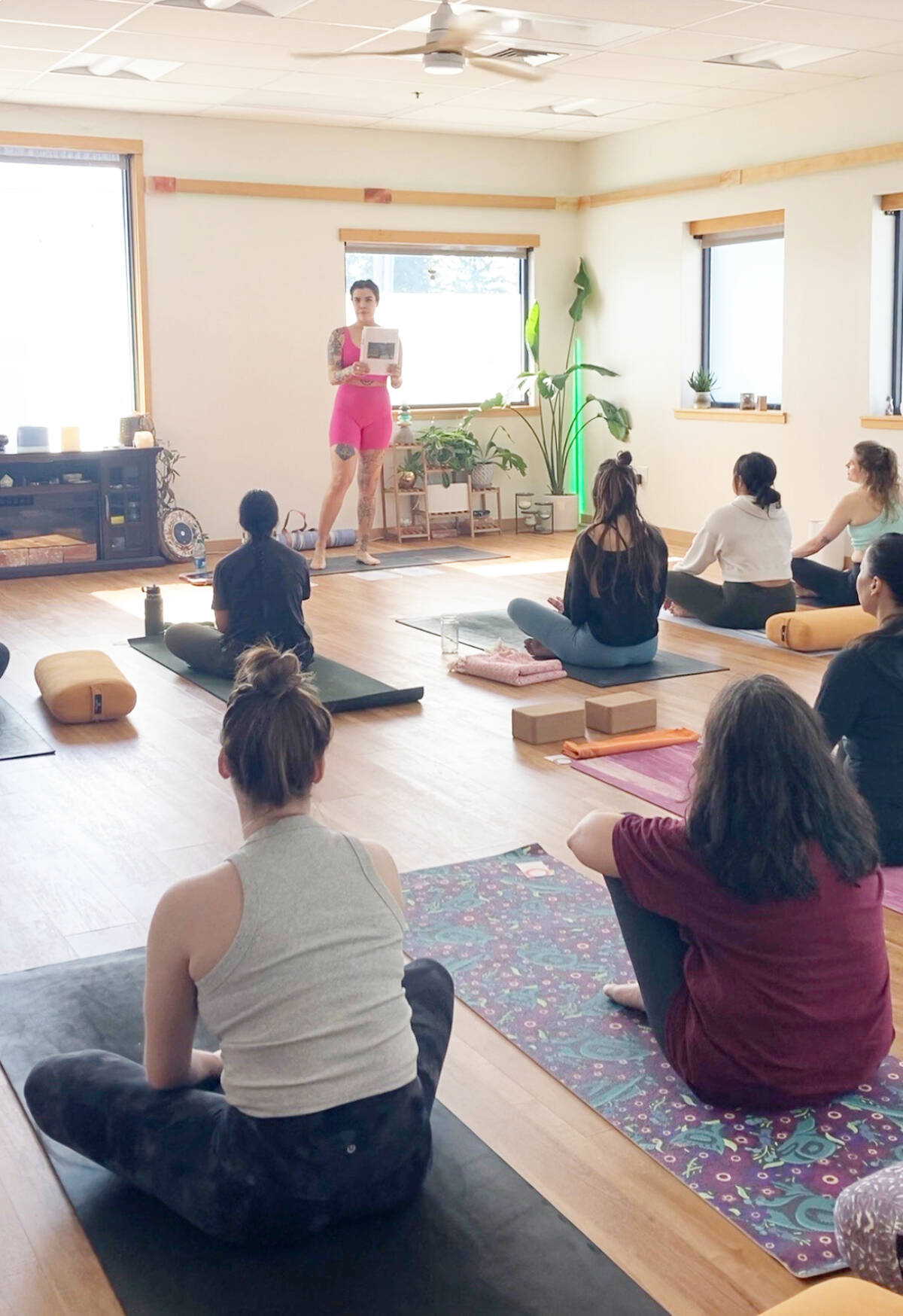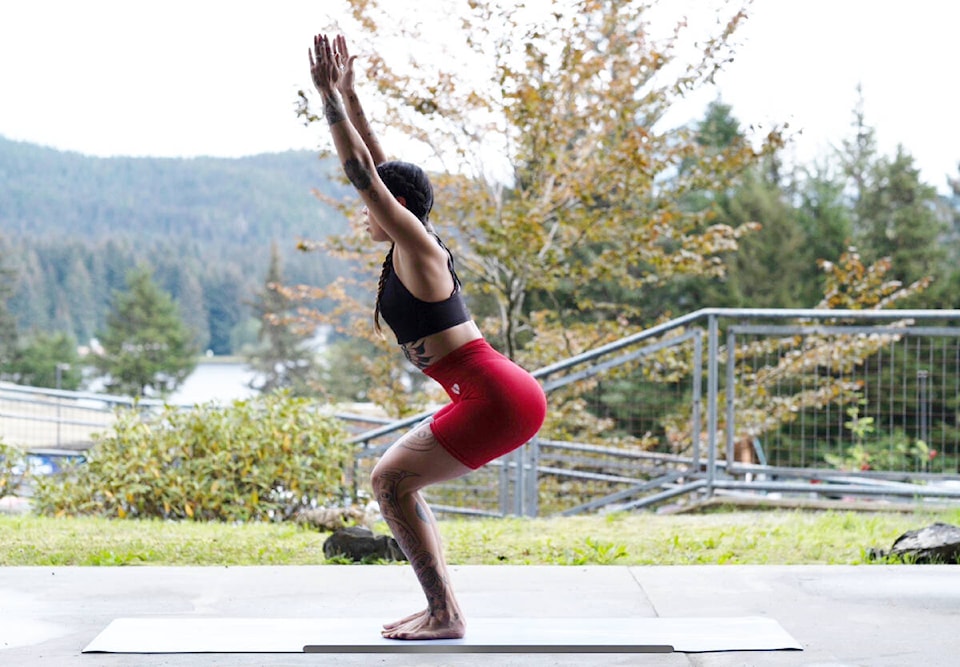When Skaydu Û Jules leads a yoga class, scorpion pose isn’t called scorpion pose. That’s because Jules’ classes blend the movements of vinyasa, hatha and ashtanga yoga with Tlingit language learning. And there’s no Tlingit word for scorpion.
It’s important to Jules to recognize that. She wants her students to be able to come into a classroom that is centred in the Indigenous worldview of her people, using the Tlingit language.
“We use words that are more descriptive of the way we see the natural world,” says Jules over the phone. So triangle pose is carrot pose in Tlingit; upside-down triangle is upside-down carrot; cobra pose, which is performed from the floor, becomes Átw amdlig̱eeni tsaa niÿtí., or seal-looking-around pose.
The way you talk about what you’re doing matters, she says. She came to that realization in her own way.
Jules is Dakhl’aweidí (Eagle/Killer Whale Clan), from the Deisleen Ḵwáan (Teslin people). She herself started learning her language four years ago. She says she was in a dark place at the time. Working with what she calls her speakers — Bessie Cooley, Sam Johnston, Lance Twitchell, Tim Hall and her mother, Connie Jules — changed her life.
“It brought me closer to elders and community and family,” she says. “It was like medicine to me, learning my language.”
Now, Jules feels a more solid sense of identity. She feels more resilient. She’s stronger, physically and mentally. She was surprised what a difference the experience made in her life, even though she’d previously seen the power language can have.
In 2018, Jules spent some time working and volunteering in Cambodia. Anytime she spoke the local dialect to Cambodians, even just a few words, they lit up in a way they didn’t with English. Language mattered.
Since then, it’s played into Jules’ role as a teacher at the Yukon Native Language Centre. It influenced her decision to attend the University of Alaska Southeast, where she’s doing a specialized bachelor of arts in Indigenous studies with an emphasis on Alaskan native languages. She’s combined that with a minor in outdoor adventure studies, which she says is a natural fit with her language and Indigenous studies. Being out on the land, connecting and moving your body, and touching the earth. That’s the kind of classroom she feels comfortable in, she says.
It also impacted her decision to incorporate Tlingit language learning into her yoga instruction after she completed yoga teacher training in Bali.
She’d always loved yoga, but her training highlighted the intent in each movement and the interconnectedness of the practice. It resonated with Jules’ understanding of Indigenous ways of knowing and being. With her worldview that everything is connected.
Another natural fit fell into place.
When Jules first started teaching language along with yoga in May, she says her classes were more immersive. She quickly realized that was too much for people, especially if they were new to both the language and yoga, which a lot of people were.
“There’s always talk of how we’re in a race right now of trying to reclaim our languages, but (trying to go full immersion right away) was a good reminder to slow down and really go back to what my intention was around mental health and being able to connect language to that,” she says.
Now she goes into each lesson and teaches five new sounds and two new sentences. She introduces poses by their English names and cuts them out gradually. It takes time, she says, but so does anything new. Rather than mastery of language or movement, she says her classes are open to people learning, making mistakes and having fun.
“In a lot of yoga spaces, you don’t see a lot of Indigenous faces,” she says. Because of that, participants can be nervous about whether or not yoga is “for” them. They have a fear of doing it wrong. Jules’ goal is to hold everyone up where they’re at, she says. To make it OK to laugh in class and be kind to yourself and make mistakes.
Her style has attracted a lot of attention since she started teaching. She has led classes at Adäka Cultural Festival, through the Teslin Tlingit Council and with other organizations. She has had people come to her to learn how they can develop a practice in their own languages. She’s had so many requests, she’s had to say no to some so she can focus on her community, her studies and the Tlingit language revitalization company she founded, Skaydu.oo.oo.oo. But it’s exciting, she says.
“It’s not something I planned, but I believe (the) creator had a plan for me,” she says. “Things keep connecting and connecting.”
Contact Amy Kenny at amy.kenny@yukon-news.com

